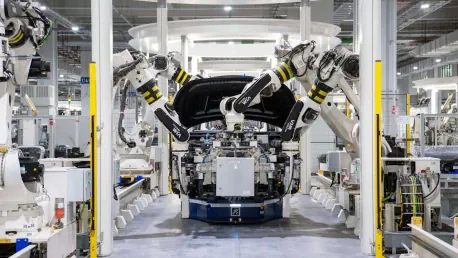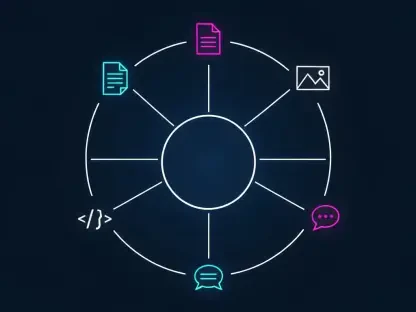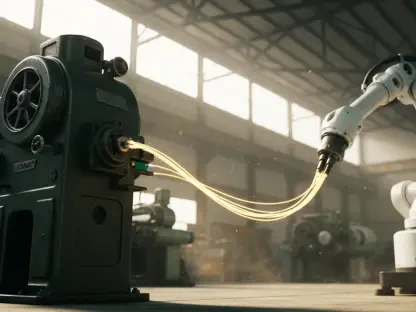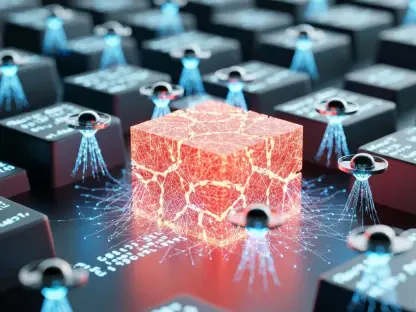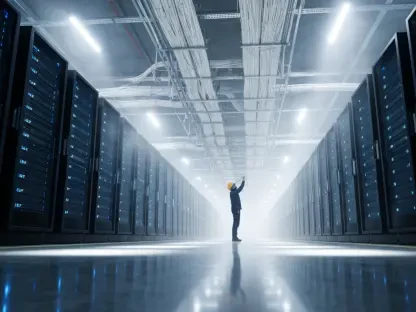A prominent figure in the realm of industrial automation, the Staubli Group has embarked on a transformative journey by amalgamating robotics and renewable energy to spearhead industrial advancements. Faced with mounting environmental challenges and regulatory demands, Staubli’s strategic focus on sustainability underscores their commitment to eco-friendly practices and technological innovation. By leveraging their expertise in automation, Staubli is enhancing energy efficiency and reducing emissions, establishing themselves as a vital contributor to a low-carbon economy.
Revolutionizing Automation in Renewable Energy
Advanced Robotic Systems for Renewable Energy Sectors
Staubli’s foray into renewable energy involves the development of sophisticated robotic systems specifically tailored for this purpose. These systems are characterized by enhanced durability, precision, and reliability, attributes that are crucial for renewable energy applications. Designed to operate over extended periods with minimal need for maintenance, these robust robotic solutions offer significant cost savings and efficiency gains. By optimizing the production and distribution of solar and wind energy, Staubli’s technology is instrumental in boosting the overall efficiency and sustainability of these energy sources.
One of the primary advantages of Staubli’s advanced automation systems is their ability to seamlessly integrate with existing energy infrastructures. This integration facilitates a smoother transition to renewable energy sources, minimizing disruption and maximizing operational efficiency. However, the initial investment required for these high-tech systems can be a barrier for smaller enterprises. Despite this, the long-term operational savings and environmental benefits present a compelling argument for adopting Staubli’s innovative technologies. As these technologies continue to evolve, Staubli’s role in harmonizing automation with sustainability is expected to set new industry standards, making a significant impact on the global energy landscape.
Enhancing Efficiency and Reducing Emissions
Staubli’s strategic pivot towards renewable energy is not merely a response to environmental concerns and regulatory pressures. It is also a testament to the company’s forward-thinking approach and commitment to sustainable industrial practices. By developing cutting-edge robotic systems, Staubli aims to enhance the efficiency of energy production and distribution in the solar and wind sectors. These advancements are crucial for reducing greenhouse gas emissions and promoting a cleaner, greener future. The company’s efforts are aligned with the global shift towards a low-carbon economy, positioning Staubli as a leader in the burgeoning field of sustainable automation.
One of the key aspects of Staubli’s approach is the emphasis on sustainability without compromising operational efficiency or data integrity. Their robotic systems are designed to deliver optimal performance while ensuring safety and security. This dual focus on sustainability and security is what sets Staubli apart in the industry. By fostering a culture of innovation and continuous improvement, Staubli is poised to revolutionize industrial practices through advanced automation and eco-friendly technologies. Their commitment to reducing emissions and optimizing energy use underscores the company’s potential to make a profound impact on global energy solutions.
Harmonizing Automation with Sustainability
Facilitating Smoother Transitions to Renewable Sources
Staubli’s integration of robotics with existing energy infrastructures represents a significant step forward in the quest for sustainable energy solutions. By facilitating smoother transitions to renewable sources, these advancements help mitigate some of the challenges associated with the adoption of new technologies. For smaller enterprises, the prospect of high initial investment costs can be daunting. However, the long-term benefits of Staubli’s automation systems, including cost savings and improved efficiency, make a compelling case for their adoption. As the technology continues to advance, the initial cost barriers are likely to diminish, making these solutions more accessible to a broader range of industries.
Another important aspect of Staubli’s approach is the emphasis on fostering collaboration and knowledge-sharing within the industry. By working closely with other stakeholders, Staubli is able to develop solutions that are not only innovative but also practical and scalable. This collaborative approach is essential for driving the widespread adoption of renewable energy technologies and achieving global sustainability goals. As more industries recognize the value of Staubli’s automation systems, the transformative impact of their innovations is expected to grow, further solidifying their position as a leader in the field.
Setting New Industry Standards
Staubli’s role in harmonizing automation with sustainability is poised to set new industry standards in several key areas. By consistently pushing the boundaries of what is possible with advanced robotics, Staubli is driving the development of more efficient, reliable, and eco-friendly solutions. These innovations are not only beneficial for individual companies but also have far-reaching implications for the entire industry. As more businesses adopt Staubli’s technologies, the cumulative effect will be a significant reduction in industrial emissions and a corresponding increase in energy efficiency, contributing to the global transition towards a more sustainable future.
Beyond the immediate benefits of improved efficiency and reduced emissions, Staubli’s innovations have the potential to transform the way companies approach sustainability. By demonstrating the tangible benefits of integrating robotics with renewable energy, Staubli is encouraging other businesses to follow suit. This ripple effect can lead to broader changes in industrial practices, fostering a culture of sustainability and innovation across the sector. As Staubli continues to refine and expand their offerings, their impact on the industry is likely to grow, influencing future developments and setting a benchmark for others to aspire to.
Sustainability and Security in Industrial Practices
Commitment to Eco-Friendly Technologies
Sustainability and security form the cornerstone of Staubli’s approach to industrial automation. In an era where eco-friendly technologies are becoming increasingly essential, Staubli is paving the way with their commitment to sustainable practices. Their advanced robotic systems are designed not only to optimize energy use but also to ensure that the adoption of these technologies does not compromise operational safety or data integrity. This dual focus on sustainability and security is critical for fostering a culture of innovation and continuous improvement within the industry.
Staubli’s commitment to eco-friendly technologies extends beyond the development of advanced robotics. The company is also actively involved in research and development efforts aimed at identifying new and innovative ways to reduce emissions and promote cleaner energy solutions. By staying at the forefront of technological advancements, Staubli is able to offer solutions that are both cutting-edge and environmentally responsible. This commitment to sustainability is a key factor in their success and a driving force behind their continued growth and influence in the industry.
Balancing Efficiency with Safety
Staubli is pioneering a new era by combining robotics with renewable energy to drive industrial progress. Responding to increasing environmental issues and regulatory pressures, Staubli has strategically prioritized sustainability, reflecting their dedication to eco-friendly operations and technological advancements. Leveraging their extensive knowledge in automation, Staubli is focused on boosting energy efficiency and cutting down emissions. Their innovative approach positions them as an essential contributor to achieving a low-carbon economy. Staubli’s initiatives also encompass developing cutting-edge solutions aimed at making industrial operations more sustainable. By integrating robotics into renewable energy sectors, they contribute significantly to reducing the carbon footprint of industrial activities. Staubli’s efforts are not just about meeting regulations; they are about leading the way in creating sustainable, efficient systems that benefit both the industry and the environment. Their ongoing commitment and innovative strategies solidify their role as a transformative force in industrial automation.
